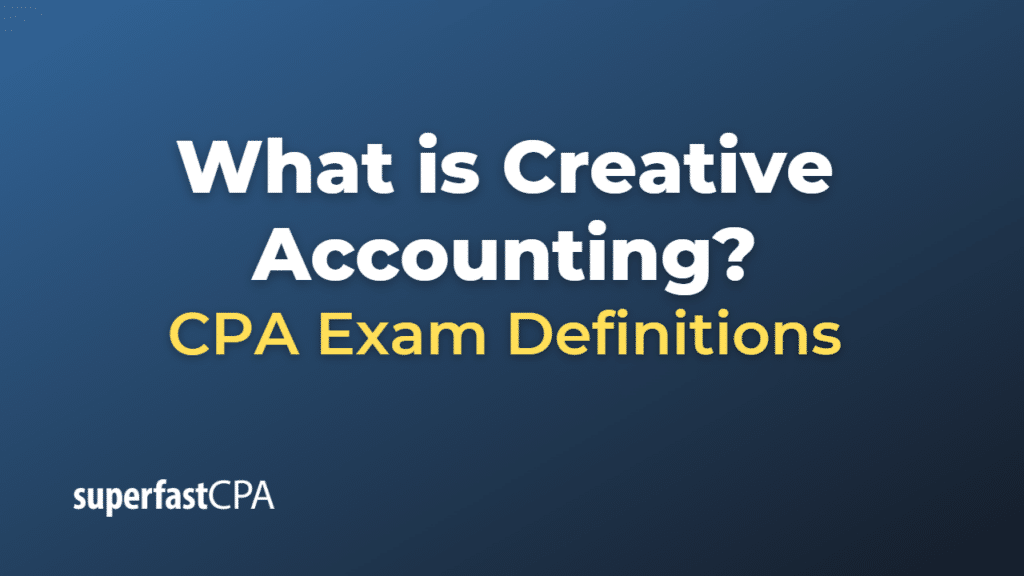Creative Accounting
“Creative accounting” refers to the use of accounting methods that are legal, but possibly bending the rules of standard accounting practices, to present financial statements in such a way as to artificially inflate a company’s profits, hide losses, or otherwise make the financial statements look more attractive to investors, creditors, or others.
It is important to note that while creative accounting might not be technically illegal, it is generally seen as unethical and can be misleading. It involves exploiting loopholes in accounting rules and standards, using subjective judgments in financial reporting, and manipulating financial data to present a desirable picture of a company’s business activities.
Some common methods of creative accounting include:
- Revenue Recognition: Companies might recognize revenue earlier than they should according to accounting standards, which can inflate earnings in the short term.
- Off-Balance Sheet Financing: Companies might keep certain liabilities off their balance sheets in order to improve their apparent financial position.
- Income Smoothing: Companies might shift revenue or expenses from one period to another to make earnings appear more consistent from year to year.
- Overvaluing Assets: Companies might overstate the value of assets or understate the value of liabilities to improve their apparent net worth.
Creative accounting can lead to serious issues, including investor mistrust, market inefficiencies, and even financial scandals. An infamous example of creative accounting leading to catastrophic results is the Enron scandal, where the extensive use of off-balance sheet special purpose entities led to the company’s bankruptcy and a significant disruption in the financial markets.
Example of Creative Accounting
Here’s an example illustrating how a company might use creative accounting:
Let’s consider a hypothetical company called TechCo, which is preparing its financial statements for the end of the fiscal year. TechCo has been struggling to meet its revenue targets for the year.
In order to boost its reported revenue, TechCo decides to use aggressive revenue recognition. The company has just signed a significant software licensing agreement with a customer. The customer will pay for the license over a period of three years, and TechCo is supposed to recognize the revenue proportionally over those three years as it provides the software service.
However, to inflate its current year’s revenue, TechCo decides to recognize all the revenue from the three-year contract immediately, even though it hasn’t yet fully earned that revenue and the customer hasn’t paid the full amount.
This boosts TechCo’s reported revenue for the current year, making the company look more successful than it really is. However, it’s misleading because it doesn’t accurately reflect the timing and certainty of the company’s revenue. It also means that the revenue for the next two years will be reported lower than it should be, as some of the revenue that should have been reported in those years has been moved to the current year.
This example illustrates how companies can use creative accounting to manipulate their financial results. While the company hasn’t technically done anything illegal, its actions are misleading and could be considered unethical. This is why it’s important for investors and others to scrutinize financial statements and not take the reported figures at face value.













